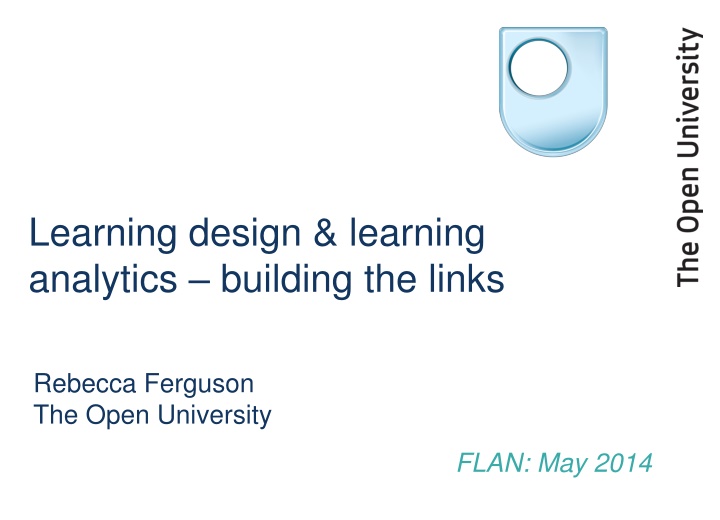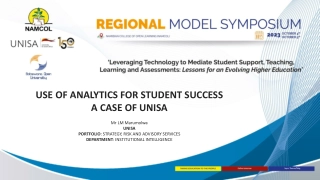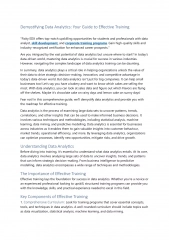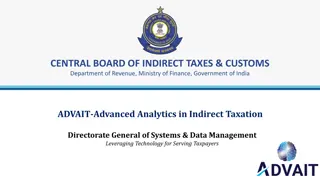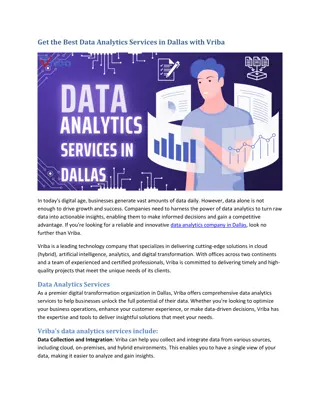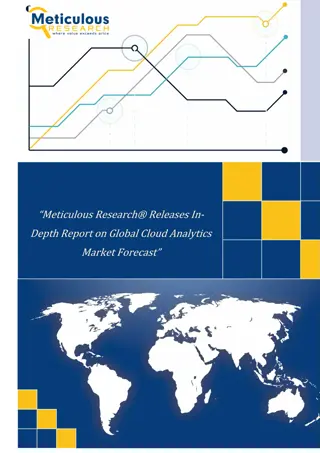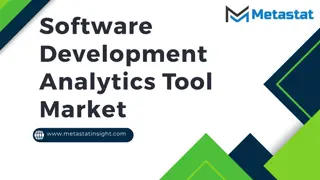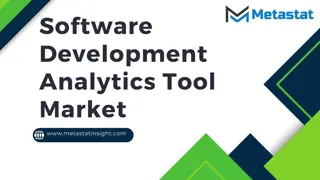analytics
Importance of learning design and analytics in education, featuring insights on student learning outcomes, MOOC tools, journey planning, and assessment strategies. Discover how analytics drive effective learning experiences and support learners on their educational path.
Download Presentation

Please find below an Image/Link to download the presentation.
The content on the website is provided AS IS for your information and personal use only. It may not be sold, licensed, or shared on other websites without obtaining consent from the author.If you encounter any issues during the download, it is possible that the publisher has removed the file from their server.
You are allowed to download the files provided on this website for personal or commercial use, subject to the condition that they are used lawfully. All files are the property of their respective owners.
The content on the website is provided AS IS for your information and personal use only. It may not be sold, licensed, or shared on other websites without obtaining consent from the author.
E N D
Presentation Transcript
Learning design & learning analytics building the links Rebecca Ferguson The Open University FLAN: May 2014
Why learning design? Provides a set of tools and information to support a learner-activity based approach Helps to show the costs and performance outcomes of design decisions Puts the learning journey at the heart of the design process Enables the sharing of best practice Helps partners choose and integrate a coherent range of media, technologies and pedagogies Enables a consistent and structured approach to review and analytics
Analytics and design Just found out that squirrels eat lichen What have students on my course learned? I just found out that there are Fens here in Ireland Have committed to this course it will give me the opportunity to learn how to write a blog Have students on my course learned what I expected them to learn?
MOOC learning design tools MOOC design template MOOC planner MOOC map Journey planner
MOOC design template Requires a short description of the course and a list of intended learning outcomes
Outcomes and analytics Learning outcome How this is assessed 1. Be able to define an ecosystem. 2. Have joined the iSpot community and obtained identifications for animals, plants or fungi. 1. Multiple choice. Week 1, question 5 2. Self report. Analytics 1. How many attempted that question? How many got it right 1st / 2nd / 3rd time? How many followed the link back to resources? Access to iSpot data. Use of MOOC hashtag. Persistence over time. Ethical implications of tracking off-site. 2.
MOOC planner Prompts designers to block out different types of learning activity Delivered Reflection Collaboration Conversation Networking Browsing Assessment
Planner and analytics Delivered Content (reading, watching, listening and observing) Analytics: amount of content viewed, dwell time Reflection (thinking, considering and reflecting) Analytics: returns to the same material, reflection exercises completed, quality of reflection Collaboration (constructing, collaborating, defining and engaging) Analytics: collaboration exercises completed, quality of collaboration
Planner and analytics Conversation (debating, arguing, questioning, discussing ) Analytics: number and length of contributions to discussion, quality of discussion Browsing (exploring, searching, finding and discovering) Analytics: Number of click-throughs to external links, number of visits, number of resources Assessment (answering, presenting, demonstrating, critiquing ) Analytics: Assessments completed, scores, dwell time on hints, persistence in answering questions
MOOC map Production checklist Identifies key features of the course
MOOC map and analytics 600 500 400 Minutes 300 200 100 0 Experiential Assimilative Assessment Information Handling Communicative Adaptive Organisation Productive
Journey planner Coherent narrative view of the learning journey Shows relationships between tools, resources, activities and content narrative
Advantages of design for analytics Helps to frame and focus analytics questions What did they learn? in relation to learning outcomes Were they social?... when they were collaborating Did they share links?... when encouraged to browse Did they return to steps?... when encouraged to reflect Helps to identify appropriate forms of analysis The same step, but with a focus on Number of visits if content Length, quality, number of comments if conversational Dwell time and repeat visits if reflection
Advantages of design for analytics Helps to identify useful analytics What do learners need to know in order to network, collaborate, browse or reflect? What do educators need to know to support them? Helps to identify gaps in the data Which data do we need from FutureLearn? Helps to identify gaps in our toolkit Which design elements can we look at easily? Which ones still pose problems?
